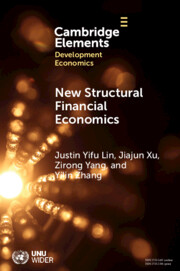424 results
Posterior cingulate and medial prefrontal excitation-inhibition balance in euthymic bipolar disorder
-
- Journal:
- Psychological Medicine , First View
- Published online by Cambridge University Press:
- 03 June 2024, pp. 1-9
-
- Article
- Export citation
Prediction model to identify infectious COVID-19 patients in the emergency department
-
- Journal:
- Antimicrobial Stewardship & Healthcare Epidemiology / Volume 4 / Issue 1 / 2024
- Published online by Cambridge University Press:
- 17 May 2024, e88
-
- Article
-
- You have access
- Open access
- HTML
- Export citation
Learn to flap: foil non-parametric path planning via deep reinforcement learning
-
- Journal:
- Journal of Fluid Mechanics / Volume 984 / 10 April 2024
- Published online by Cambridge University Press:
- 27 March 2024, A9
-
- Article
- Export citation
Modality-general and modality-specific bilingual control mechanisms in spoken and written productions
-
- Journal:
- Bilingualism: Language and Cognition , First View
- Published online by Cambridge University Press:
- 07 March 2024, pp. 1-12
-
- Article
- Export citation
Chapter 9 - Importance of Timely Sequencing, Tracking, and Surveillance of Emergent Variants
-
-
- Book:
- Accelerating Diagnostics in a Time of Crisis
- Published online:
- 06 January 2024
- Print publication:
- 07 March 2024, pp 166-193
-
- Chapter
- Export citation
Interface coupling effect and multi-mode Faraday instabilities in a three-layer fluid system
-
- Journal:
- Journal of Fluid Mechanics / Volume 982 / 10 March 2024
- Published online by Cambridge University Press:
- 01 March 2024, A8
-
- Article
- Export citation
Existential distress and associated factors in advanced cancer patients: A cross-sectional study
-
- Journal:
- Palliative & Supportive Care , First View
- Published online by Cambridge University Press:
- 16 February 2024, pp. 1-8
-
- Article
- Export citation

New Structural Financial Economics
- A Framework for Rethinking the Role of Finance in Serving the Real Economy
-
- Published online:
- 15 February 2024
- Print publication:
- 29 February 2024
-
- Element
-
- You have access
- Open access
- HTML
- Export citation
P33: A Re-Evaluation Study and Literature Review on AD8 as a Screening Tool
-
- Journal:
- International Psychogeriatrics / Volume 35 / Issue S1 / December 2023
- Published online by Cambridge University Press:
- 02 February 2024, p. 112
-
- Article
-
- You have access
- Export citation
Introduction of hospital-based health technology assessment in China: experiences from seven pilot hospitals
-
- Journal:
- International Journal of Technology Assessment in Health Care / Volume 40 / Issue 1 / 2024
- Published online by Cambridge University Press:
- 29 January 2024, e20
-
- Article
-
- You have access
- Open access
- HTML
- Export citation
Clinical parameter-based prediction model for neurosyphilis risk stratification
-
- Journal:
- Epidemiology & Infection / Volume 152 / 2024
- Published online by Cambridge University Press:
- 15 January 2024, e21
-
- Article
-
- You have access
- Open access
- HTML
- Export citation
Rabies vaccination adherence and associated factors among rabies-exposed patients in Shenzhen, China: a hospital-based cross-sectional study
-
- Journal:
- Epidemiology & Infection / Volume 152 / 2024
- Published online by Cambridge University Press:
- 10 January 2024, e15
-
- Article
-
- You have access
- Open access
- HTML
- Export citation
Machine Learning for Smart and Energy-Efficient Buildings
-
- Journal:
- Environmental Data Science / Volume 3 / 2024
- Published online by Cambridge University Press:
- 04 January 2024, e1
-
- Article
-
- You have access
- Open access
- HTML
- Export citation
Assessing social cognition in patients with schizophrenia and healthy controls using the reading the mind in the eyes test (RMET): a systematic review and meta-regression
-
- Journal:
- Psychological Medicine / Volume 54 / Issue 5 / April 2024
- Published online by Cambridge University Press:
- 04 January 2024, pp. 847-873
-
- Article
-
- You have access
- Open access
- HTML
- Export citation
Genome Survey and SSR Analysis of Camellia nitidissima Chi (Theaceae)
-
- Journal:
- Genetics Research / Volume 2022 / 2022
- Published online by Cambridge University Press:
- 01 January 2024, e14
-
- Article
-
- You have access
- Open access
- HTML
- Export citation
Stopping Power Modulation by Pump Waves of Charged Particles Moving above Two-Dimensional Electron Gases
-
- Journal:
- Laser and Particle Beams / Volume 2021 / 2021
- Published online by Cambridge University Press:
- 01 January 2024, e14
-
- Article
-
- You have access
- Open access
- HTML
- Export citation
Association between the PLTP rs4810479 SNP and Serum Lipid Traits in the Chinese Maonan and Han Populations
-
- Journal:
- Genetics Research / Volume 2021 / 2021
- Published online by Cambridge University Press:
- 01 January 2024, e14
-
- Article
-
- You have access
- Open access
- HTML
- Export citation
Effect of Viscosity on Stopping Power for a Charged Particle Moving above Two-Dimensional Electron Gas
-
- Journal:
- Laser and Particle Beams / Volume 2022 / 2022
- Published online by Cambridge University Press:
- 01 January 2024, e19
-
- Article
-
- You have access
- Open access
- HTML
- Export citation











